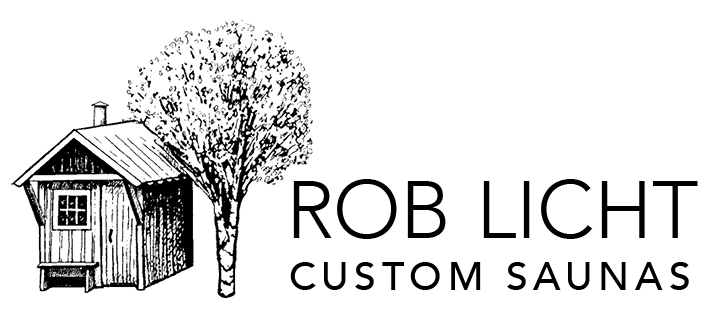The Last Word on Foil.
Lately I have been thinking about the application of the foil I use in my saunas as a radiant vapor barrier. Perhaps this is because it almost Christmas and I was thinking of how we decorated the tree each year. The final touch would be to drape foil tinsel over everything; our mother would have to constantly damp down our enthusiasm by reminding us to place it carefully on each branch, not to throw it.

There are tricks to using the foil but the first and most important step is to buy the right stuff. Like the tinsel we put on the tree, the foil may actually be aluminum-coated plastic— which you don’t want to use. That plastic is likely polyethylene which, if you look it up on the material specification sheet that every product has, it has an upper working temperature of 55-120° C, meaning it will likely melt at typical sauna temps. Sauna Foil, available from any of the familiar sauna suppliers, is aluminum foil on a kraft paper backing. I used to find it with fiberglass reinforcing thread, which is helpful because the stuff tears easily. Also helpful is 4 ft. rolls, rather than 3 ft so you can do a wall in 2 passes, but I have trouble finding this too. I recently tried a new supplier selling 4 ft rolls of “sauna” foil, but upon opening it had a suspicious plastic look to it. That night I put it in the sauna and within seconds it began to distort and curl up like the polyethylene I suspected it was made of. (See illustration above)
The second thing is to design the wall correctly. I read and see a lot of misinformation that touts using no air gap with foil. The air gap is essential. The foil works by reflecting radiant heat. All “black bodies” give off and absorb radiant heat that travels in a straight line from one hotter object to another cooler one, the hotter the body, the more heat it emits. The sauna rocks radiate a “soft” heat to you, the walls, and the benches, and that is why you want the sauna to be laid out so that everyone has a view of the rocks. The fire, if seen through a clear glass door, also radiates heat— but at a higher intensity. Too high for a comfortable sauna (but great for ambiance.) When that heat hits foil, it is reflected back into the room or the backside of the cedar—if there is an air gap of at least 1/2″. If it touches the backside of the cedar the foil— also a perfect conductor—pulls the heat away from the cedar and transfers to the wall space behind.

I’ve understood this for along time. The first semester of college I took a class: Solar Design and the Energy Efficient Home. We learned all about insulation, heat transfer and basic building skills. The first day of lab, where we were building a timber frame house, I was handed a Makita 12″ circular saw. My building career started right then and there.
With the web of misinformation out there I had to think of a way to illustrate this basic principle of thermodynamics that I learned my freshman year. So, one slow day in the shop I rigged up an experiment and photographed it. (see illustration below) I set up a section of cedar wall about 18″ from my infrared shop heater and fastened 2 pieces of foil to the back, one with a 3/4″ air gap, and one with no gap. After an hour the cedar was 250°F on the front—like it is often is in my sauna. The back of the cedar was 121° F, which is impressive by itself. The back of the foil with no gap was 115°F, meaning it was acting as a perfect conductor, and the back of the foil with an air gap was 71°F: room temp. The air gap was clearly making a difference, 45° in this case.


After an hour on cedar 
back of cedar 
back of foil, no gap 
air gap makes big difference!
The foil is a perfect vapor barrier rated at zero perms— meaning no vapor moves through it. But unless you layer it properly, with insulation behind it, the moisture will condense on it, or the first cold surface it hits. Even in a perfect build, there might be cold spots in the insulation (typically about the size of a mouse hole), so there likely be some condensation, but not a problem if there is air movement. The air gap behind the cedar allows air to circulate around the cedar, removing any moisture and ensuring that the wood heats and dries evenly and remains stable. Heating one side of a board and wetting or cooling the other is how you make curved boat staves.
There are other tricks to using the foil- like unrolling it and re-rolling it foil-in, or using temporary magnets when working a commercial job with metal studs, but the key is to use care. Use plenty of hi-temp foil tape and patch tears as you go and work with a partner if possible.
I suppose you could build a sauna by putting a heater in a refrigerator box- but that would last about a day and be incredibly wasteful. Cedar touching foil won’t ruin your sauna and neither will plastic melting in the walls where you don’t see it. But if you are going to take the time and bear the expense of building a sauna, you might as well do it right and so it will last generations. I guess my mother was right: applying foil carefully and not just throwing it up is the way to work.
